[et_pb_section fb_built=”1″ admin_label=”section” _builder_version=”3.22.3″][et_pb_row admin_label=”row” _builder_version=”3.22.3″ background_size=”initial” background_position=”top_left” background_repeat=”repeat”][et_pb_column type=”4_4″ _builder_version=”3.0.47″][et_pb_text admin_label=”Text” _builder_version=”3.22.7″ background_size=”initial” background_position=”top_left” background_repeat=”repeat” header_font=”Oswald Light||||||||”]
This is a guest blog from successful online entrepreneur, Shabbir Nooruddin.
How do you make money from affiliate marketing and ad revenue?
The dream of many investors is having an income source that makes money while they sleep. It’s the premise of a lifestyle business: a source of passive income that doesn’t always require you to be present and will add value no matter where you are.
Such income sources used to be pipe dreams limited only to those who had spare cash lying around and could buy up large swaths of real estate. Thanks to the internet and the advent of virtual real estate, the financial barrier to enter has dropped significantly and the potential return on investment has increased manifold.
One of the most popular online business models today is affiliate marketing, or affiliate revenue, and often it is thought of as a totally different model than content publishing. However, a hybrid of these businesses is not uncommon.
How does affiliate marketing work?
Affiliate marketing is not only popular but perhaps one of the most lucrative businesses in the digital space. Basically, you sell someone else’s goods and services for a fee. When someone buys from you, you get a commission.
Affiliate marketing is an arrangement where an online retailer (for example, Amazon Associates) pays a commission to a website owner, or social media promoter, for the Amazon products sold through third-party sites or social media channels.
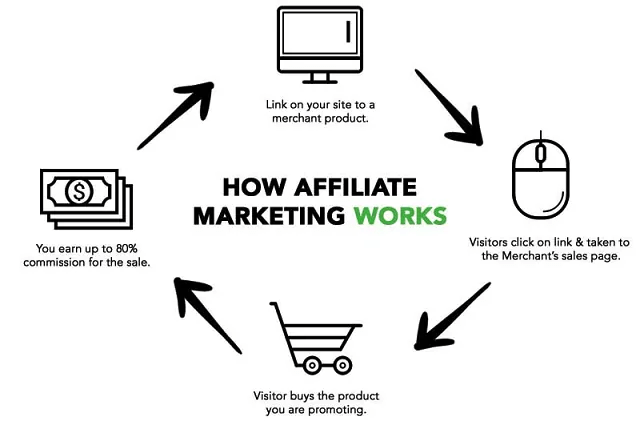
If you have a product you want to sell, you can use affiliates to do the product promotion for you and share a part of the sales as an incentive. Or, if you don’t have a product but you have a website, you can use your marketing skills to become an affiliate and make money promoting products.
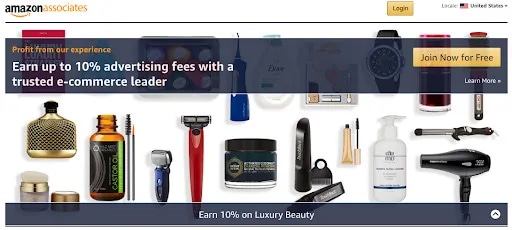
Who makes money with affiliate marketing?
The first player is the merchant. This could be a large corporation or an independent seller. The next player is the affiliate. This is where money is made. The affiliate uses marketing strategies to promote the value of a product to their visitors. The affiliate will do this through written content on their websites, SEO, and social media channels.
One of the most common ways that affiliates promote a product is by researching information surrounding that product, and then consolidating the information into a user-friendly buying guide (for example, “10 Best Vacuum Cleaners”). Throughout the article, there will be affiliate links to the products mentioned which lead readers to the host website to complete the purchase process.
The more helpful, accurate, and informational the content is, the more likely someone is to trust that content and then use the links on that page to buy directly from the click.

There are hundreds of sites that offer affiliate commissions. A simple Google search will give you a long list, Amazon is the largest so far.
Keep in mind that affiliate marketing is not a get-rich-quick scheme. It requires hard work and dedication. You will have to build a marketing system that works best for you and your audience. This can consist of websites with written content, social media channels, and other marketing vehicles.
How do you profit from a new affiliate website?
The first scenario is starting a site from scratch. You’ve invested your time and money in creating a profitable site. At some point, the site has matured and brings in a good amount of passive revenue.
For example: consistent monthly revenue for the last twelve months is $1,000 (all numbers are arbitrary.) In today’s (2019) market, the website could be valued all the way up to 36x. Your site, making $1,000 a month, could be valued as high as $36,000.
There are several well-established online platforms (such as Empire Flippers, Flippa Business, and Domain Magnate) that allow publishers to sell their website in an auction-style setting.
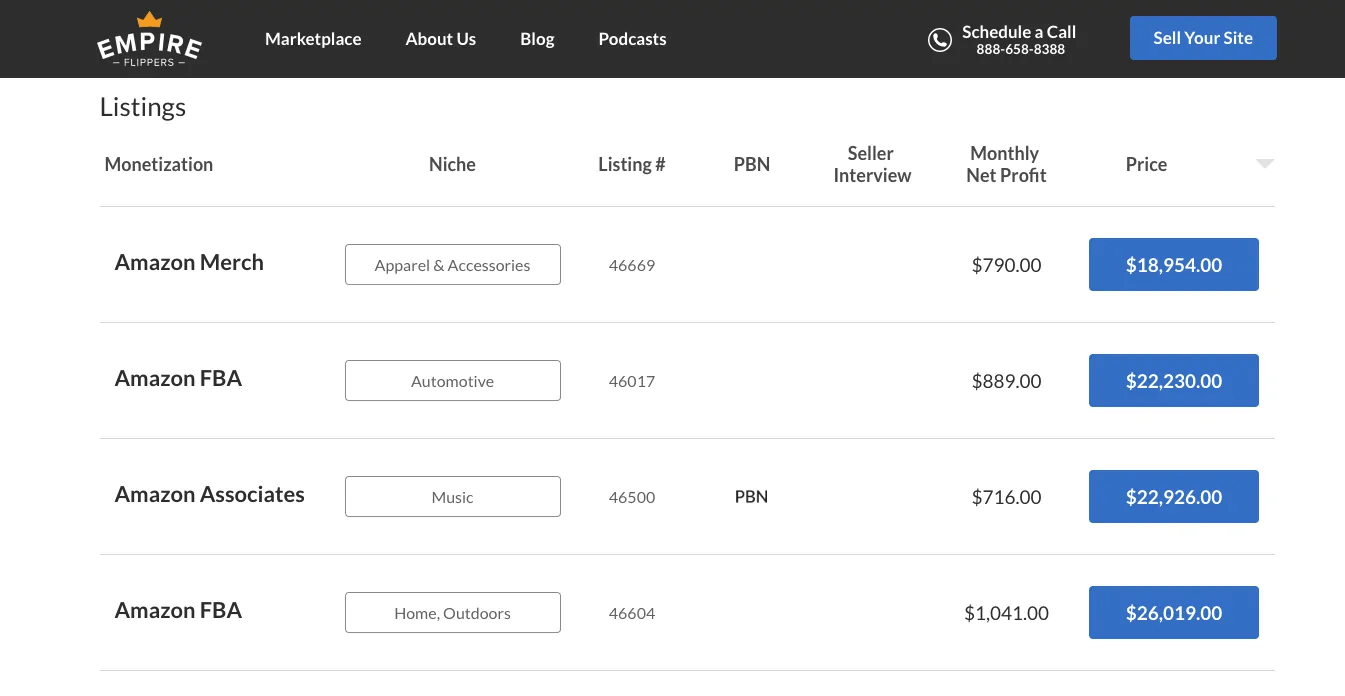
How do you build a portfolio of sites to flip for big cash?
You can also build multiple sites and sell them as they “mature.” For example, “site one” has reached a target of $2,000 per month (again, arbitrary numbers) and is valued at $72,000. You can sell this site for a great profit.
Now, you hope your other site will reach the target of $2,500 per month within the next year or so. When the latter site matures, you can sell it for 36x, i.e. $90,000.
Building and selling sites can go on forever, making affiliate marketing sites very a lucrative business.
Another scenario is buying an already established site. The site is making $1,000 a month, and you paid $36,000 for it. After purchasing the site, implement your marketing and SEO techniques to double or triple the revenue. In a year’s time, the site could bring in $2,500 a month in revenue. Now, the value of the site has increased from $36,000 to $90,000, a profit of $54,000!
Can you put display ads on an affiliate website?
Yes. It can often help you greatly increase your monthly revenue. In many cases, it can double it. When you have a good amount of traffic on your website, you can monetize it by displaying programmatic advertisements.
Displaying ads on your site is easier than you think. There are several tools that help publishers do this, and I’ll do a shameless plug here, Ezoic happens to be an extremely valuable technology if you want to do this properly.
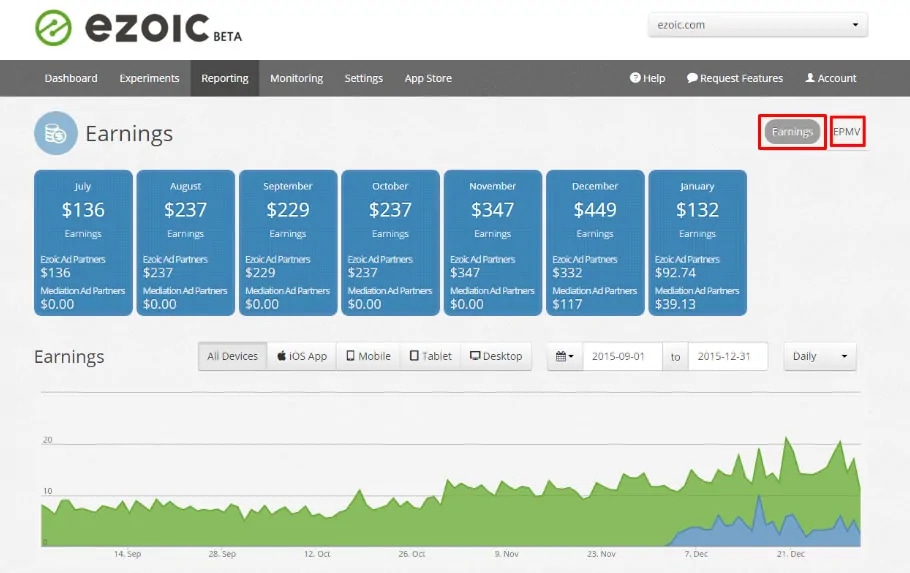
Ezoic makes finding all the best ad demand sources, testing ad placements, ensuring the ads don’t impact SEO, and accounting for user experiences extremely easy. Their software is constantly analyzing and making changes to ensure the publisher gains the most revenue possible. It makes getting paid by ad networks other administrative issues as easy as it gets.
All you have to focus on is bringing people to your site. The more clicks, the more money you make. The idea is to get as much traffic to your site as possible.
How to get quality traffic to your website…
Your website is ready but how do you get the world to see it? The answer is traffic. The more you can get, the more money you will make. Simple, right?
The tried and true way to get people to your site is through Google and other search engines. Every day, millions of people are looking for information online. Why shouldn’t you be able to answer them?
Your website should be positioned as a leader and influencer in your niche, and when people search for information about your niche, your site will show up in the results.
This starts and ends at creating great content, promoting it wherever you can, and using data to work faster than most other sites.
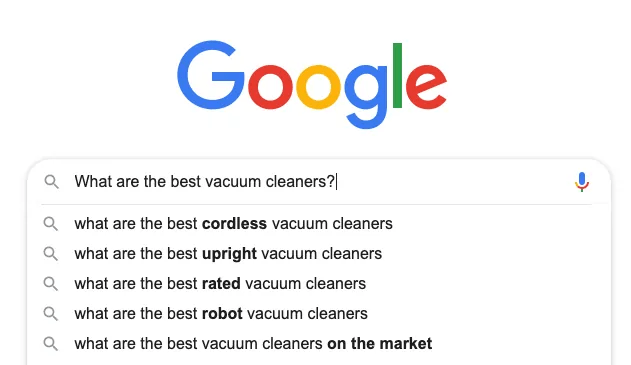
Another way to increase traffic to your site is by using the power of social media. Well-known platforms like Facebook, Twitter, Instagram, and Pinterest, should point to your website.
A good marketing approach is indeed two-pronged using a combination of search engine optimization and social media marketing. Relying on two independent sources of traffic is also a good failsafe. If for some reason traffic were to falter from one source, you’d have a backup and your business would not tank overnight.
Most affiliate marketers become SEO experts over time, SEO is a huge part of the passive factor of affiliate marketing. Don’t worry if you’re not an “expert” today. The best time is to start is now. SEO is always changing.
We’ll go into greater detail about each of the following factors in their own posts; but here is what I like to call: The Three Pillars Of Ranking A Website.
1. Keyword research
If you were to disregard the next two pillars (on-page and off-page SEO) and focused only on keyword research, you can still make a good affiliate website that generates traffic.
Keyword research means looking for phrases and queries that people are already searching for online.
Once you’ve identified those queries, you study the type of search results that are showing up. Are they doing the topic justice? Or are they irrelevant and incomplete?
Irrelevant or incomplete results present you with an opportunity to make something better.
There are many tools that can help you come up with keywords.
My favorite paid tool is Ahrefs. For a free tool, the Keywords Everywhere Chrome extension (pictured below) is great.
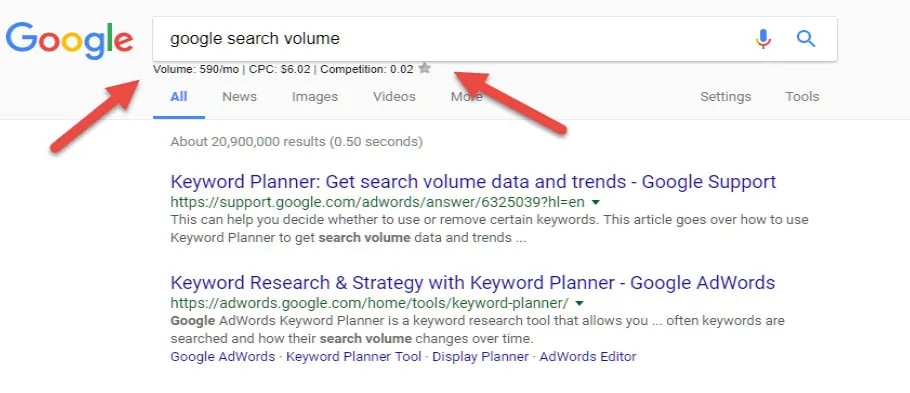
Once you have a list of 50-100 keywords, you can create content around those keywords. For every unique keyword, try to create one piece of content.
2. On-page SEO
When writing, you need to format your content so that search engines can read and understand it.
This means properly formatting your:
- Title (the text that shows up in the tab on your browser). This is very important because it allows you to bluntly inform readers and search engines what your content is about. Every post needs a unique title.
- Headings. there are 6 headings, denoted by H1 to H6. H1 is the topic, which is closely related to your title. You’ll only use the H1 once, and you’ll use H2 for subtopics, and H3 for topics within those subtopics. H4-H6 are not used that much.
- Images. Search engines can only pick up on text, not images, so web developers included a handy little tool called an IMG ALT tag. This is basically an image description, and it will be what search engines see instead of your image. Filling out IMG ALT tags for any of your images is a crucial step because many people overlook it and you want a competitive advantage. Another huge part of on-page SEO is user experience.
You also need to make sure your content is fulfilling two things:
- It’s answering the exact query people are looking for
- It’s encouraging people to stay on your site and read the whole content. More time spent on your page = better.
Get Ezoic’s easy writing guide designed to help you rank easily.
3. Off-page SEO
Off-page SEO is any action you take off of your own website in an attempt to increase your online presence. Mostly, off-page SEO simply means building links.
Link building is a popular approach. Link building is when several, (maybe hundreds, thousands, or more) sites all over the internet point to your site for relevant information.
Links are one way to let search engines know that your website is an authoritative source in your niche. A link from a relevant website can be considered to be an upvote, which search engines will notice and realize “hey, someone is referring to this website, it must mean their information is good.”
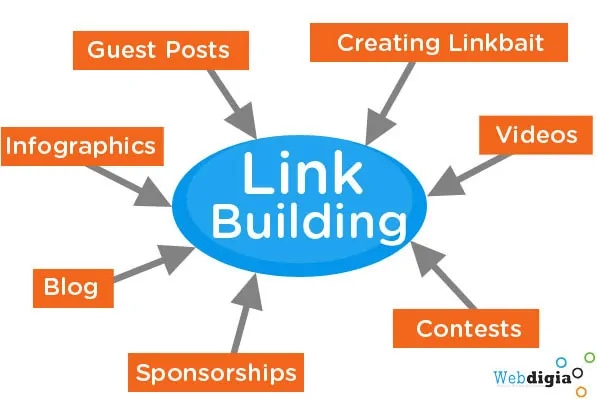
Of course, link building has been used and abused, and many tactics you will read about online are no longer effective.
If someone were to ask me to summarize link building in one sentence, I’d say that link building is like getting a reference letter from relevant, real websites.
Making affiliate marketing work for your website
It may seem like affiliate marketing is an easy way to make passive income, but the truth is that before you reach the truly passive stage, there is a lot of hard work involved.
Affiliate marketing is a real business and requires time and effort like anything else. Unfortunately, there is no such thing as free money.
However, once you’ve put in the effort and grown your site(s) to a certain point, it can turn into passive income and you can reap the rewards of your hard work for a long time.
[/et_pb_text][/et_pb_column][/et_pb_row][/et_pb_section]

